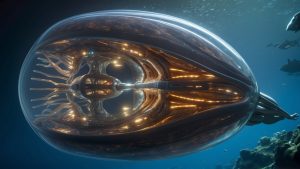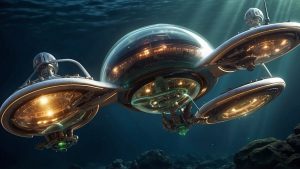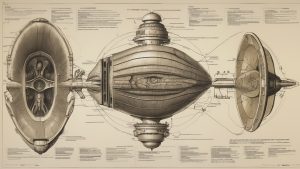Undersea Aliens: Development of Unique Biological Systems to Navigate Space and Deep Water
Humans have long wondered about the existence of extraterrestrial life. Our collective fascination with the unknown has fueled explorations and researches in various scientific fields. While many speculate about potential life forms in deep space, we often overlook the possibility of undersea aliens developing unique biological systems to navigate both water and space.

To understand this concept fully, we must first delve into the insights gained about undersea aliens’ craft motor systems. From existing information, we can begin to understand the intricate mechanisms that enable these enigmatic beings to traverse the depths of water and the expanse of space simultaneously.
The undersea aliens’ craft motor systems operate on principles far removed from our conventional technology. Their propulsion systems are not reliant on traditional engines or rockets but instead employ biological mechanisms inherently designed to tackle the challenges of both worlds.
A Mysterious Liasion: Aliens From The Ocean Encounters of Wonder.
Furthermore, undersea aliens have developed propulsion systems that are intrinsically linked to their unique biology. Unlike human-made engines that require external reactants to generate thrust, undersea aliens utilize propulsion systems embedded within their bodies. Their biological systems convert chemical energy into propulsive force, providing them with remarkable maneuverability and sustained acceleration. It is speculated that these propulsion systems have evolved to function in both the water and the vacuum of space, providing undersea aliens with seemingly limitless freedom of movement.
Additionally, these extraterrestrial beings possess biological systems that enable them to withstand immense pressure and temperature variations. The depths of the ocean and the vastness of space present extreme conditions. Undersea aliens have evolved intricate biological adaptations, such as pressure-resistant exoskeletons and temperature-regulating mechanisms, to withstand the harsh environments they encounter. These adaptations not only allow them to explore the depths of the oceans but also provide protection as they venture into the vacuum of space.
 The concept of undersea aliens developing unique biological systems to navigate space and deep water is undoubtedly mind-boggling. It challenges our understanding of biology, engineering, and the limits of life in the universe. These extraterrestrial beings have evolved to overcome the barriers that separate the water and space domains, seamlessly adapting to the challenges presented by both environments.
The concept of undersea aliens developing unique biological systems to navigate space and deep water is undoubtedly mind-boggling. It challenges our understanding of biology, engineering, and the limits of life in the universe. These extraterrestrial beings have evolved to overcome the barriers that separate the water and space domains, seamlessly adapting to the challenges presented by both environments.
While much remains unknown about undersea aliens and their extraordinary craft motor systems, studying their unique biology can provide valuable insights into the possibilities of life beyond Earth. The remarkable adaptations and mechanisms these beings possess may inspire new ideas and approaches for human technological advancements.
As we continue to explore the mysteries of the universe, it is essential to keep an open mind and embrace the possibility that life forms exist in unexpected and unexplored places. Perhaps one day, we will discover undersea aliens and learn from the biological systems they have developed to navigate both space and deep water. Until then, we can only marvel at the wonders of the cosmos and strive to unlock the secrets that lie within.
